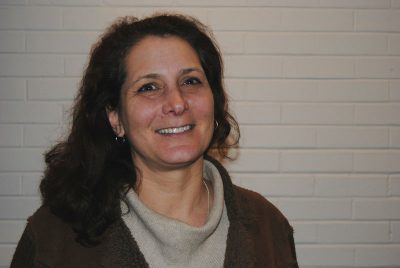By Lesley LeRoux, TLS freelance writer
When a group of students is interested in taking on special projects outside of coursework, it’s clear that a hunger for learning exists far beyond the classroom.
That’s what systems and computer engineering professor Cheryl Schramm discovered when students would come to her office asking if they could work on something over the summer without pay.
“They’re craving the experience because courses introduce it to them, but the formal classes just make them want to do more,” she says.
Schramm helped fulfill the need for more diverse learning strategies and extracurricular opportunities for students, which earned her a Teaching Achievement Award in 2011 and a Teaching with Technology Award in 2014.
In order to provide students with more hands-on, experiential learning, Schramm championed a robotics club, which was established in 2009. The club organizes robotics competitions in the atrium and hosts weekly ‘hacker sessions.’
“It’s all about enjoying the process of programming and learning through doing and learning through other people,” Schramm says.
“I guess that’s another aspect of my involvement in teaching, is the whole idea of the need for social engagement here at Carleton and the benefits that come from providing connections between people.”
Schramm says her involvement in the club has been mentoring and advocating on the part of the group. She was also instrumental in helping them find a space on campus to store the robots and equipment.
But since the club is fairly self-sustaining, Schramm has used some of the funds from her Teaching Achievement Award to provide each student in one of her classes with a Raspberry Pi, a special type of computer.
The low-cost computers help the students engage more directly with technology in the classroom, and she says several of her students had so much fun with the computers they wanted to continue using them once the course ended.
Technology is a key component to how Schramm approaches teaching. She says she aims for a flipped classroom model, assigning theory through readings and using interactive activities in class to explore at a greater depth.
One particular method she uses is creating YouTube videos with her tablet to show students how to work through various problems.
“It’s not about the correct answer; it’s how you go about answering,” Schramm says. “The important thing that I’m trying to do is give them the ‘how-to’ to achieve that answer.”
